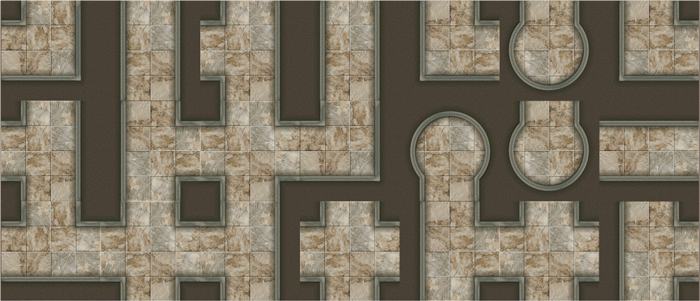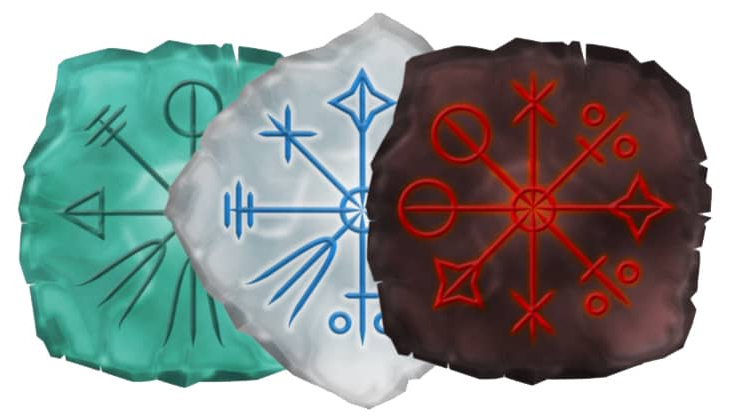Nothing binds a group of D&D players together more than solving a difficult task, such as a puzzle, together. It’s a beautiful thing when players and their characters cooperate to achieve a common goal. And yet, when you hand out a carefully prepared puzzle that should incite teamwork, all too often, one player solves the puzzle while the others zone out.
That’s not what we want to happen. So how do you create D&D puzzles that require teamwork? Here are our 5 top tips:
1. Give Every Player a Task
The problem with many D&D puzzles is that players immediately focus solely on the puzzle and forget about their teammates. And within 30 seconds everyone at the table can see what player is most adept at solving the puzzle. That’s when the others take a step back to let the expert solve it.
And then some players say they don’t like puzzles. Well, some players don’t like combat and they still do that. And if a player were to not participate during a fight the group would probably ask what gives?! Puzzles usually last between 5 and 15 minutes to solve. It’s not that big a deal to help out the team. But if a player feels overwhelmed with the complexity of a puzzle, they might say they don’t like puzzles when really they don’t want to be embarrassed. So here’s how to fix that.
Start with giving players puzzles that are easy to solve and offer a clear path to a solution but that also require a lot of steps to solve. When a team has a clear task that requires more work, they are less likely to zone out.
Also, give players tasks that they are interested in and that play to the strengths of their characters. A puzzle could involve a test of strength where one player holds open a heavy portcullis so the others can get to the puzzle behind it. Or a bard may sing a song to distract the goblins while the party sneaks by to the puzzle area. These players aren’t directly solving the puzzle, but their characters’ actions are still vital to success.
YOU MAY ALSO LIKE:
2. Split Up The Party
This one may feel counterintuitive but you can force players to work together by splitting up the party. Imagine a puzzle where one PC is standing in a room with symbols and their translation scribed on a wall. And his teammates are each standing in different rooms with only symbols and levers to pull. They would have to communicate with each other to solve the puzzle.
3. Divide Puzzle Pieces or Clues Among Players
When you split up the party what you are really doing is handing a piece of the puzzle to each D&D player to force cooperation. But you can also do this by giving each player a piece of the puzzle. You can divide clues or puzzle pieces.
The problem with this tactic is that it doesn’t always work. Sometimes players just give all the pieces to one player who then solves the puzzle. And sometimes they keep the pieces for themselves and the puzzle never gets solved. But by dividing pieces at least everyone contributed something to the solution. Here’s an example of Runestone Puzzles that is perfect for dividing puzzle pieces.
If you really want to force cooperation you can decide only certain players can manipulate specific puzzle pieces. For instance,
- Divine casters: Only move white puzzle pieces
- Arcane casters: Only move black puzzle pieces
- Low to no magic users: Only move green puzzle pieces

4. Allow Characters to Use the Help Action
When using puzzles it is important to not only challenge the players but to also challenge their characters. You can do this by using skill checks. So even if a player isn’t very good at solving puzzles, their wizard with 20 intelligence loves them.
You can allow intelligence checks to find clues. When you also allow characters to help out with the check by using the ‘help action’ suddenly every character can contribute.
“When you take the Help action, the creature you aid gains advantage on the next ability check it makes to perform the task you are helping with, provided that it makes the check before the start of your next turn”. – Player’s Handbook (PHB) pg 192
Using skill checks also invites players who are shy about their puzzle abilities to contribute. They can always blame the dice instead of being challenged as a player.
But what if a player is playing a character with low intelligence? Well, a high roll could mean they arrive at the correct conclusion by accident which is always fun to roleplay. And remember, not every check needs to be an intelligence check. If the barbarian smashes the wall in frustration (strength check) and a piece of plaster falls off revealing a clue, that’s also solving the puzzle!
5. Use Puzzles that can be Viewed From All Sides

Many puzzles are traditionally designed to be solved by only one player. And they’ve been laid out so text and images are all facing one direction. But with D&D players are sitting around the table when you place a puzzle in the center. So our last tip is to use puzzles that can be viewed and solved from all sides. This lets everyone work together no matter what side of the table they are on.
Most puzzles in our webshop were designed for cooperative play. But the ones that can be viewed from all sides are:
- Dungeon Puzzles
- Lock Puzzles
- Runestone Puzzles
- Floor Puzzles
- Laser Puzzles
- Wilderness Puzzles
- Elemental Puzzles
These puzzles come with multiple pieces you can divide among players. In our experience, having actual physical puzzle pieces to hold and manipulate draws players in and helps them participate and cooperate more actively. And with the Puzzle Bundle, you get all of these puzzles at a substantial discount. So be sure to check out our webshop.
Dark Ulf is the founder and editor of DNDpuzzles.com. When not writing for DNDpuzzles he travels the multiverse and destroys demons with a crossbow in one hand and a crossword in the other.
We hope this site inspires you to put more puzzles into your D&D games.



